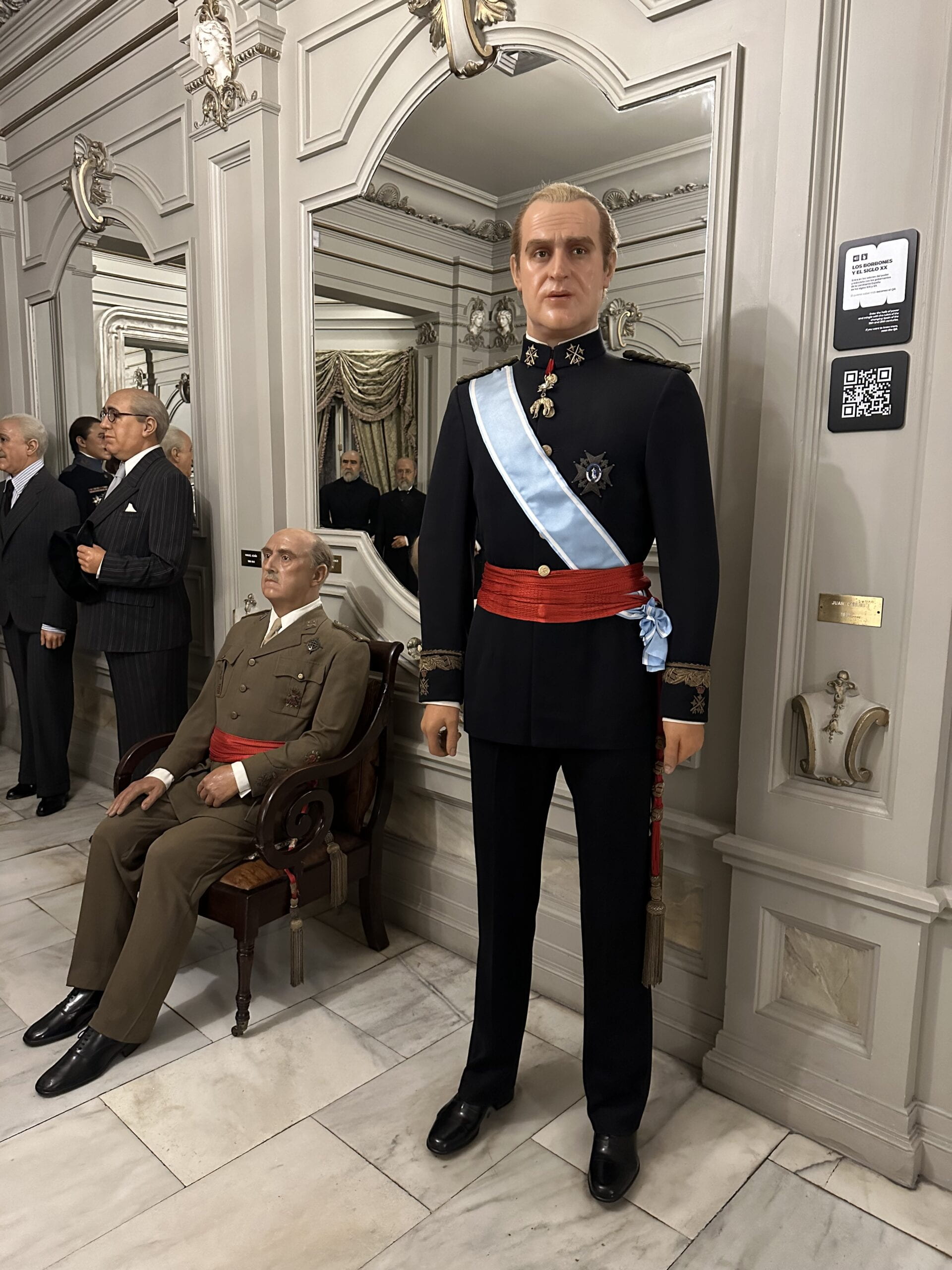It took me a minute to realize why the Wax Museum of Madrid smelled like church. The odor I had always assumed was incense used for ritual purposes is, in fact, the smell of votive candles. Votive candles and wax statues of major figures in Spanish history and culture.
I’m currently writing a new biography of Moses Maimonides for a medieval lives series that will include images. My editor encouraged me to find images that are freely available to use through creative commons license or other means. As I was looking for images to include with my book proposal, I discovered that there is a likeness of Maimonides in the Madrid Wax Museum, but I couldnt’ find any photos that would be good enough to use for publication so I went to take my own.
Behold Wax Maimonides (r) and Wax Averroes (r) in the wax Nasrid-style palace that holds all of the Andalusi figures, regardless of whether they lived in any kind of temporal or geographic proximity to Nasrid Granada.
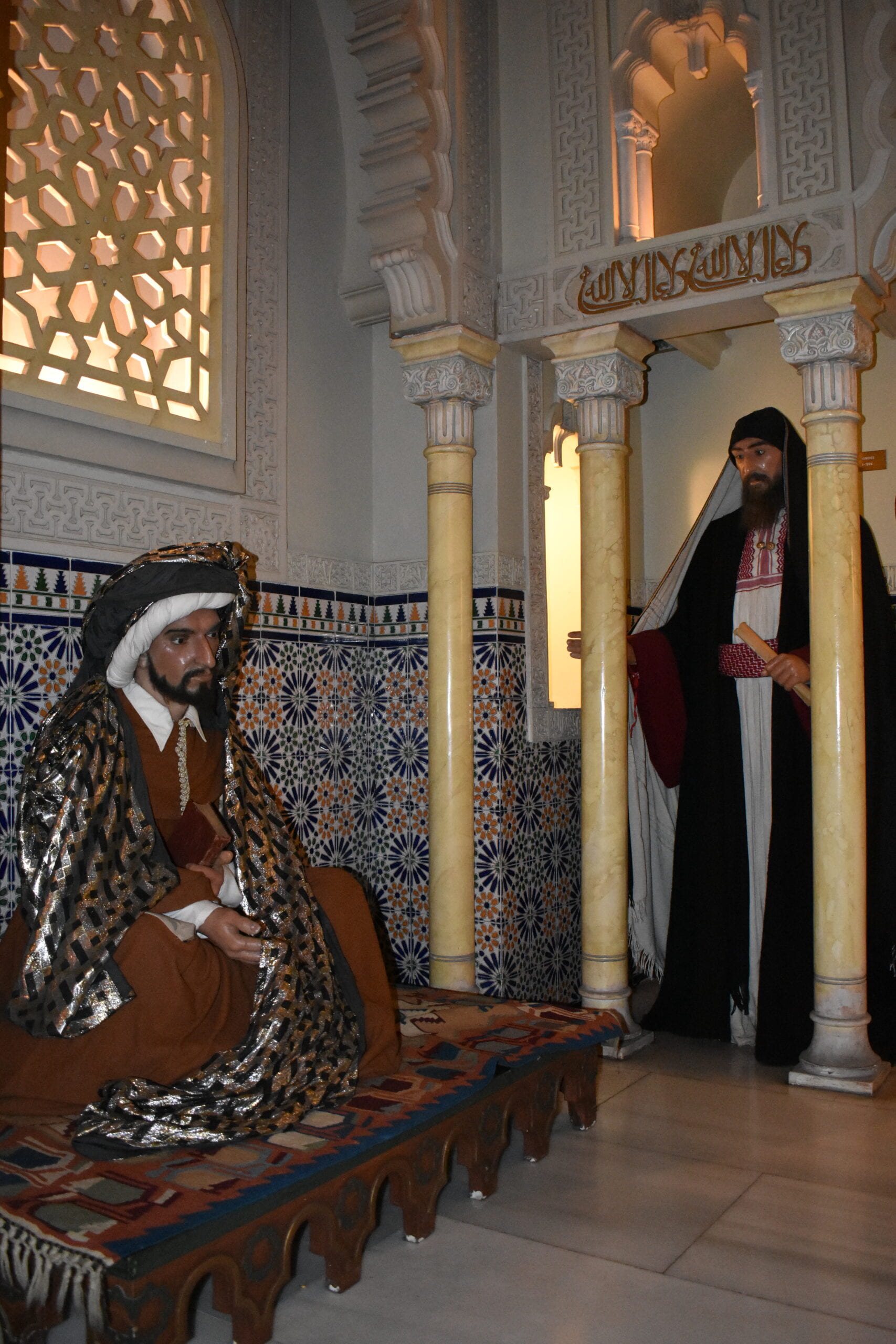
I usually love museums that seem to be governed by a basic curatorial principle of “throw some stuff at the wall and see what sticks,” museums like the Barnes Foundation and Sir John Soane’s House Museum. The Wax Museum is that same kind of anachronic mishmash but without the charm of a collection build up by an eccentric art lover over the course of his life. I’m not sure whether I’m effectively resisting the urge to overanalyze or whether it’s all so in-your-face that there’s really nothing left to say.
Maimonides is in what is more or less the “al-Andalus room,” which features Muslim and Jewish figures. Christian figures from the Middle Ages, even ones who were deeply imbricated with the Islamicate culture of al-Andalus, such as the Cid and Alfonso X, are in a separate room.
The room with all the Andalusi figures is decorated in a style that’s evocative of Nasrid architectural ornament: a tilework panel on the bottom third of the walls with geometric plasterwork above, arches with many tiny lobes supported by narrow white marble columns with highly stylized floral motifs, and of course the lemma of the Nasrid dynasty: la ghalib ila allah, or, there is no victor but god.
It’s an anachronistic setting for all but the final two figures, Boabdil and his mother, Aisha, who famously handed Granada over to the Catholic Monarchs, Ferdinand and Isabel in the case of the former, and berated her son as effete for that act in the case of the latter.
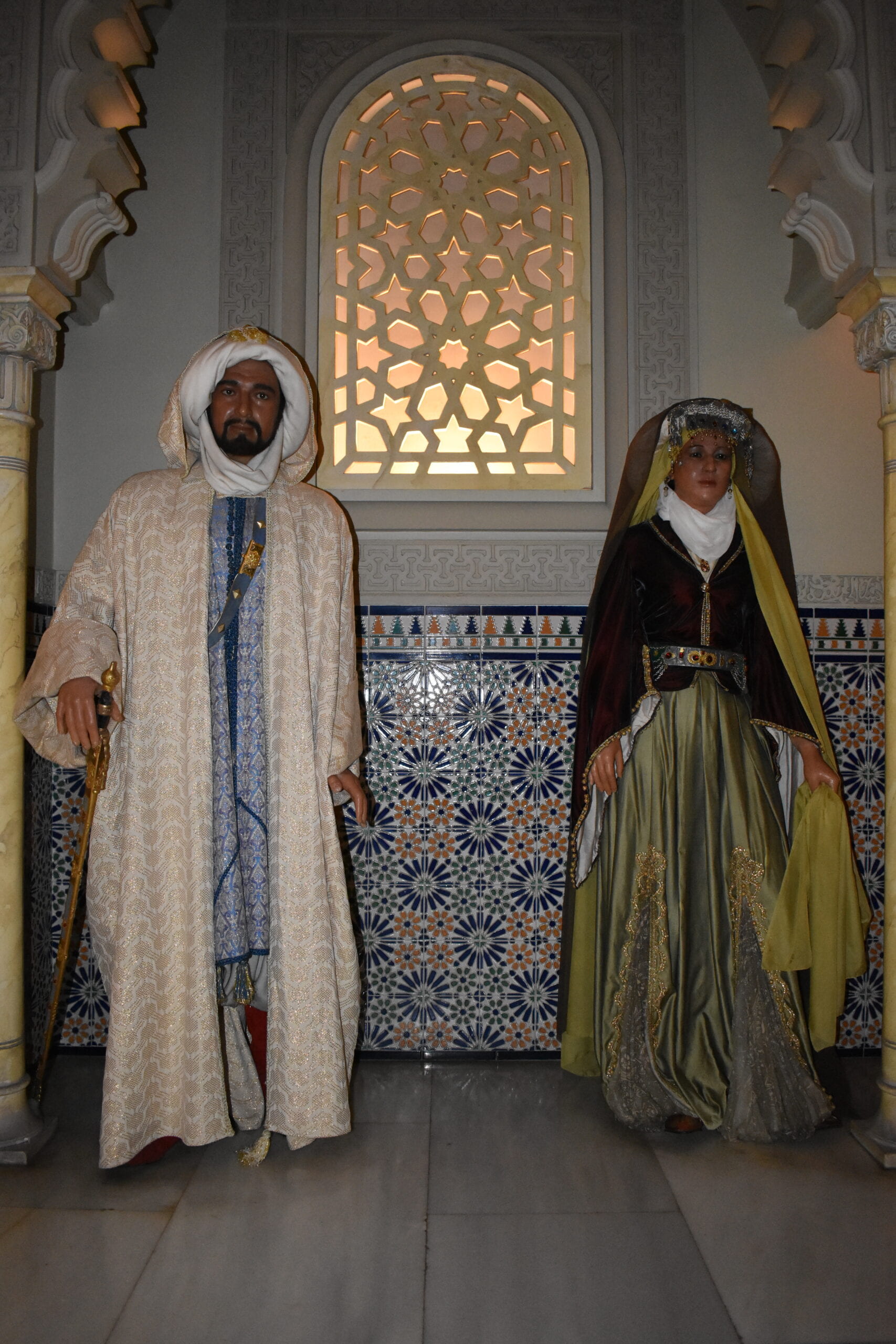
But it fits in with a heavy-handed kind of decorative ethos that is readily found in Madrid and grows out of the approach to restoring Andalusi monuments that was popular in the late nineteenth century, following on Owen Jones’ Grammar of Ornament that posited some broad and orientalizing ideas about color and ornament in Islamicate design. It also makes use of a combination of real Arabic script (as in the Nasrid lemma in the plasterwork) and pseudo-Arabic script (as in the polychrome “frescoes”) that comes directly from that moment in the historiography.
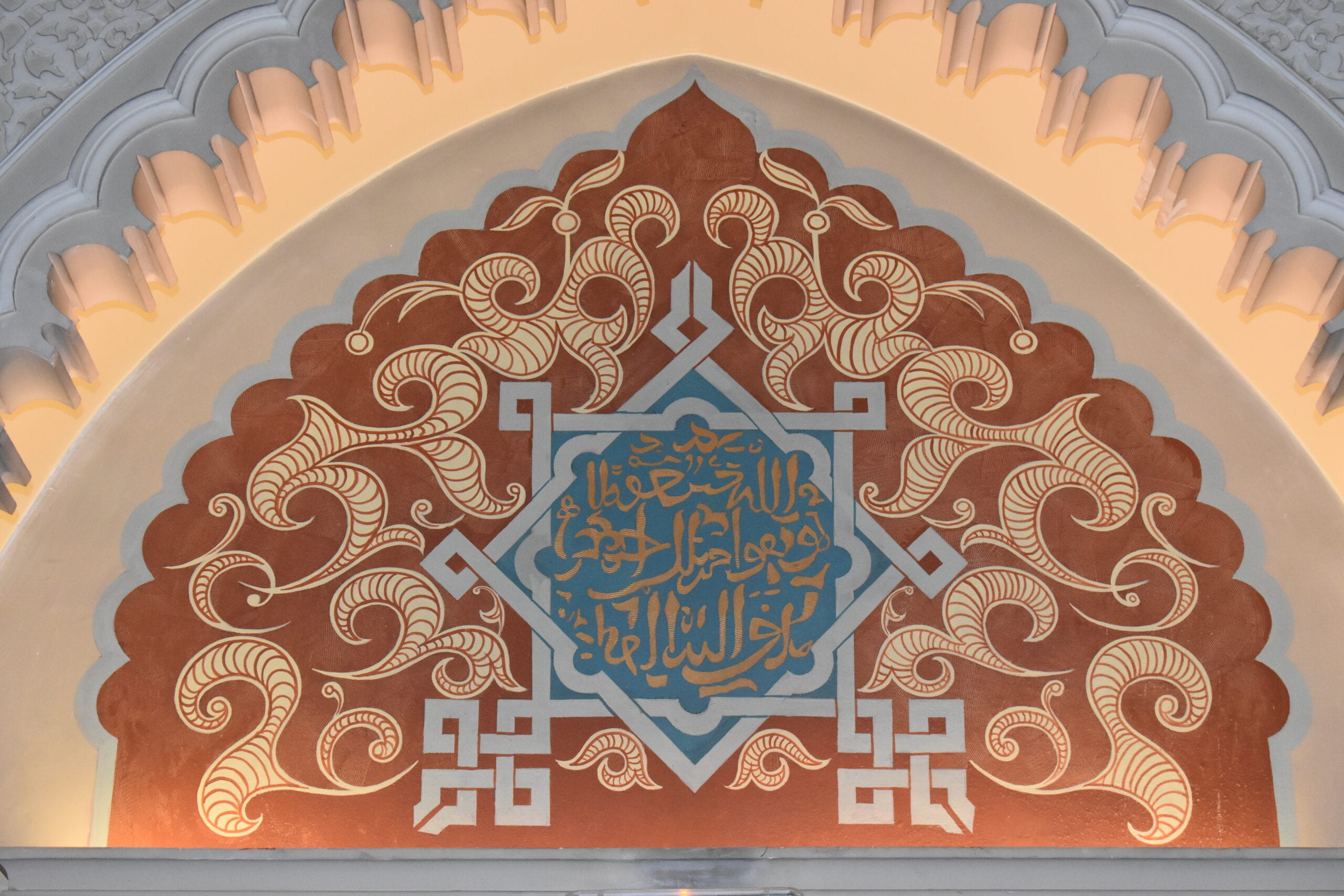
The wax statues’ clothing was a bit of a pleasant surprise, nodding at least to what is known about fashion in different moments of Andalusi history rather than just dressing everyone up like an Ottoman subject from the 16th century, which so often happens.
Located across from the Plaza de Colón, which abjectly glorifies the conquest of the Americas and boasts the largest Spanish flag to fly anywhere in the world, the museum echoes that particular nationalist ethos both implicitly and explicitly. These tableaux are so on-the-nose that I’m not sure I even need to comment beyond just showing them:
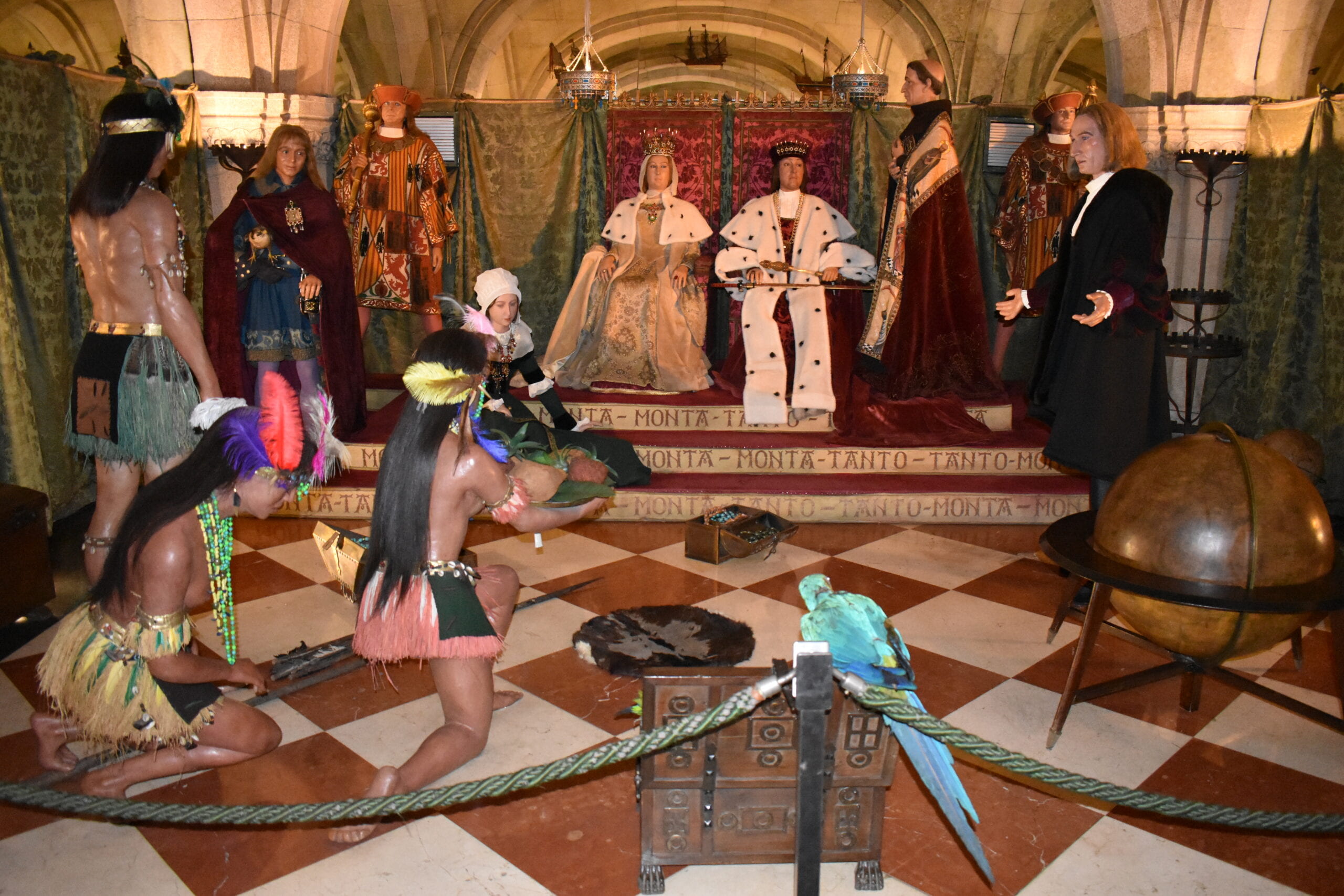
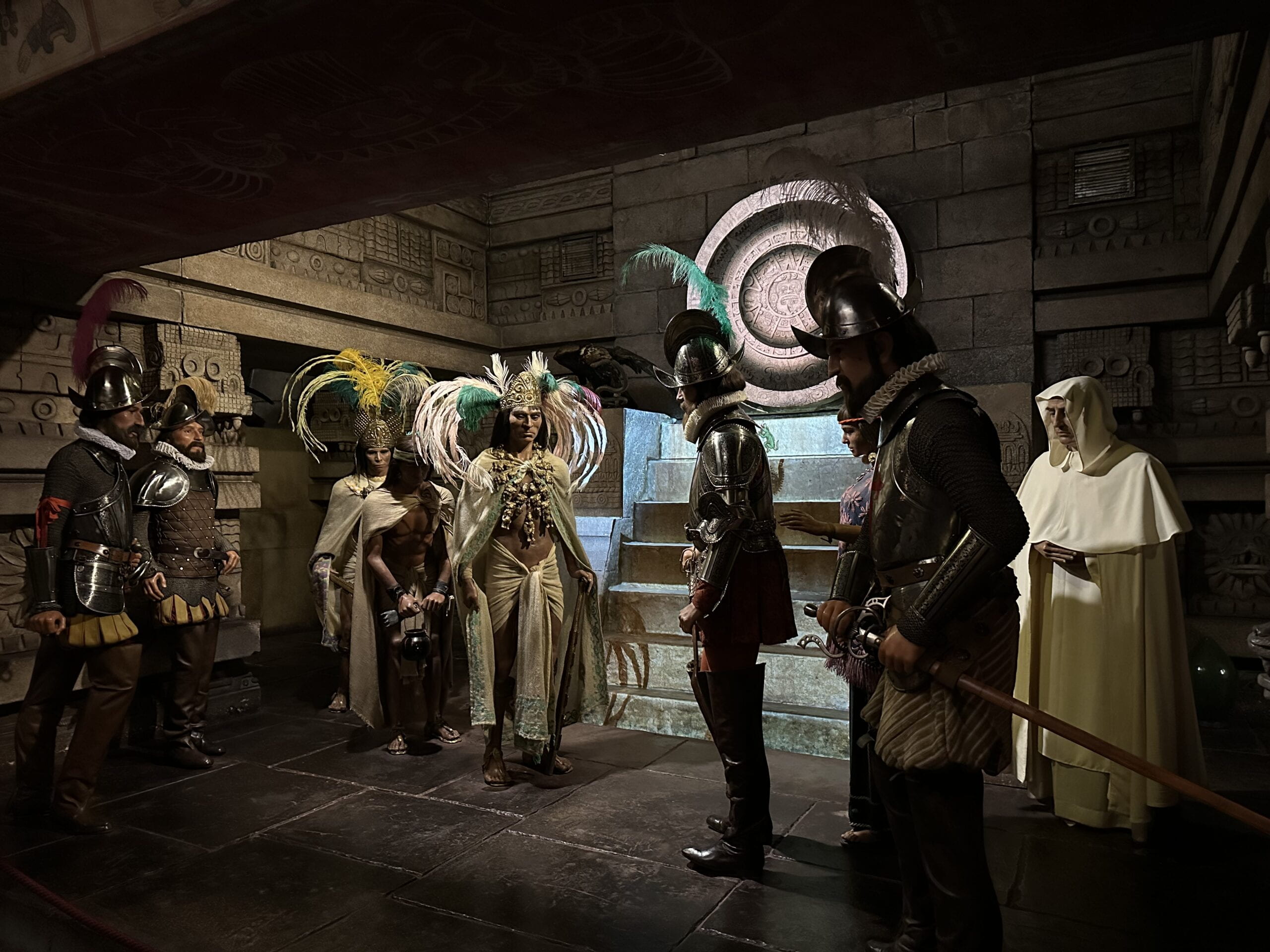
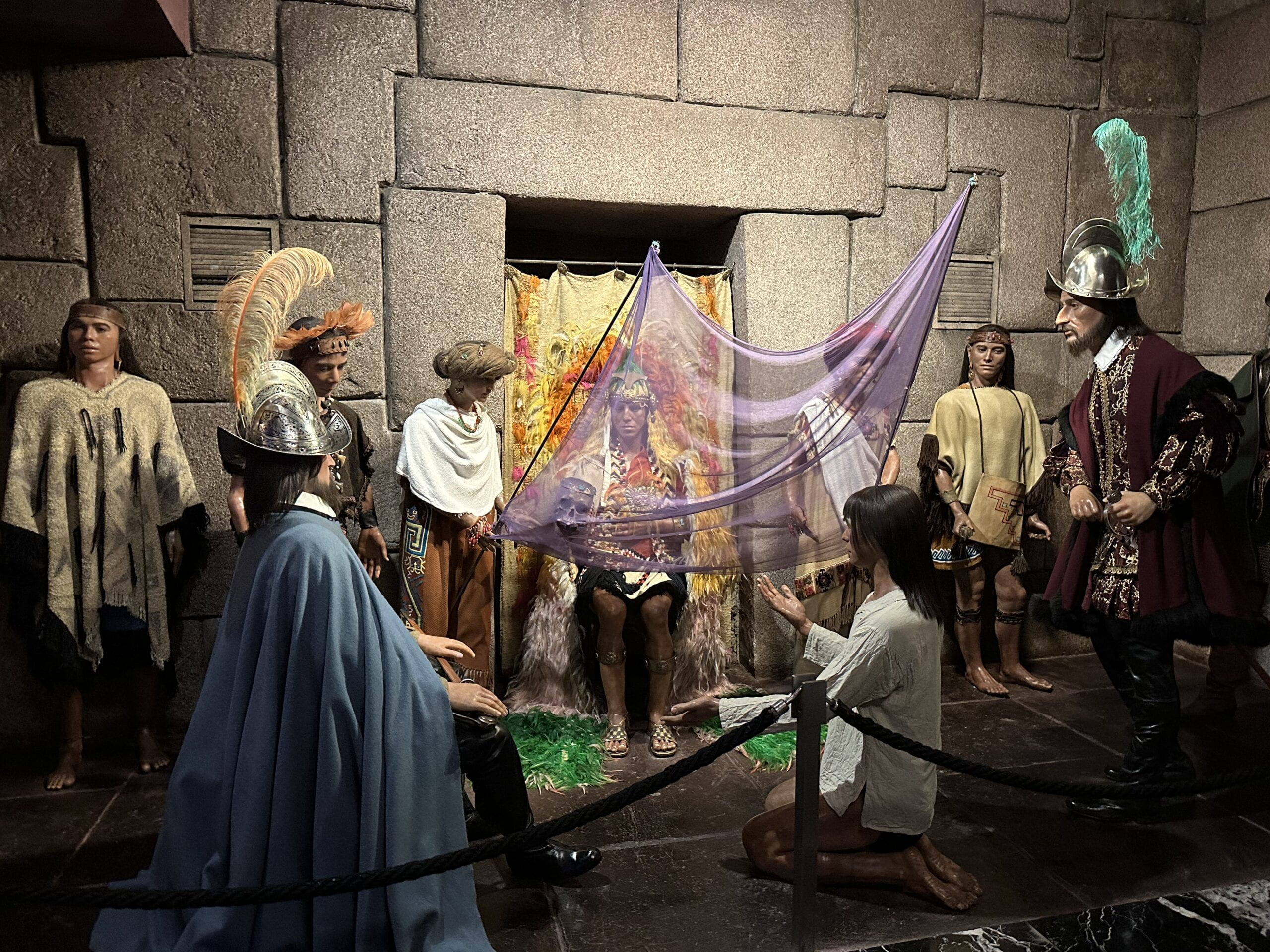
The wax smell started to give me a headache so I didn’t see all of the exhibitions, but the last room I went to was home to the likenesses of early modern Spanish writers, which I entered and promptly said: “Is that Tamara Falcó standing next to Lope de Vega?” It was not Tamara Falcó but rather her mother, Isabel Preysler as a young woman. The family resemblance was uncanny and I was a little bit horrified at myself for recognizing her (yes, I watched the daughter’s reality show and saw her on MasterChef España), but it also felt like a questionable win for my familiarity with Spanish pop culture.
I got a half-answer to why she was there next to Lope de Vega: Isabel Preysler is involved with Mario Vargas Llosa, who is at the other end of the room because he is… old enough to be an early modern writer, I guess. (This is a joke. The commonality between Mario Vargas Llosa and the rest of them might be that the former tends to subscribe to a kind of Spanish cultural nationalism (in spite of being Peruvian) that is often upheld using the plays, novels, and poems of the other writers depicted there.
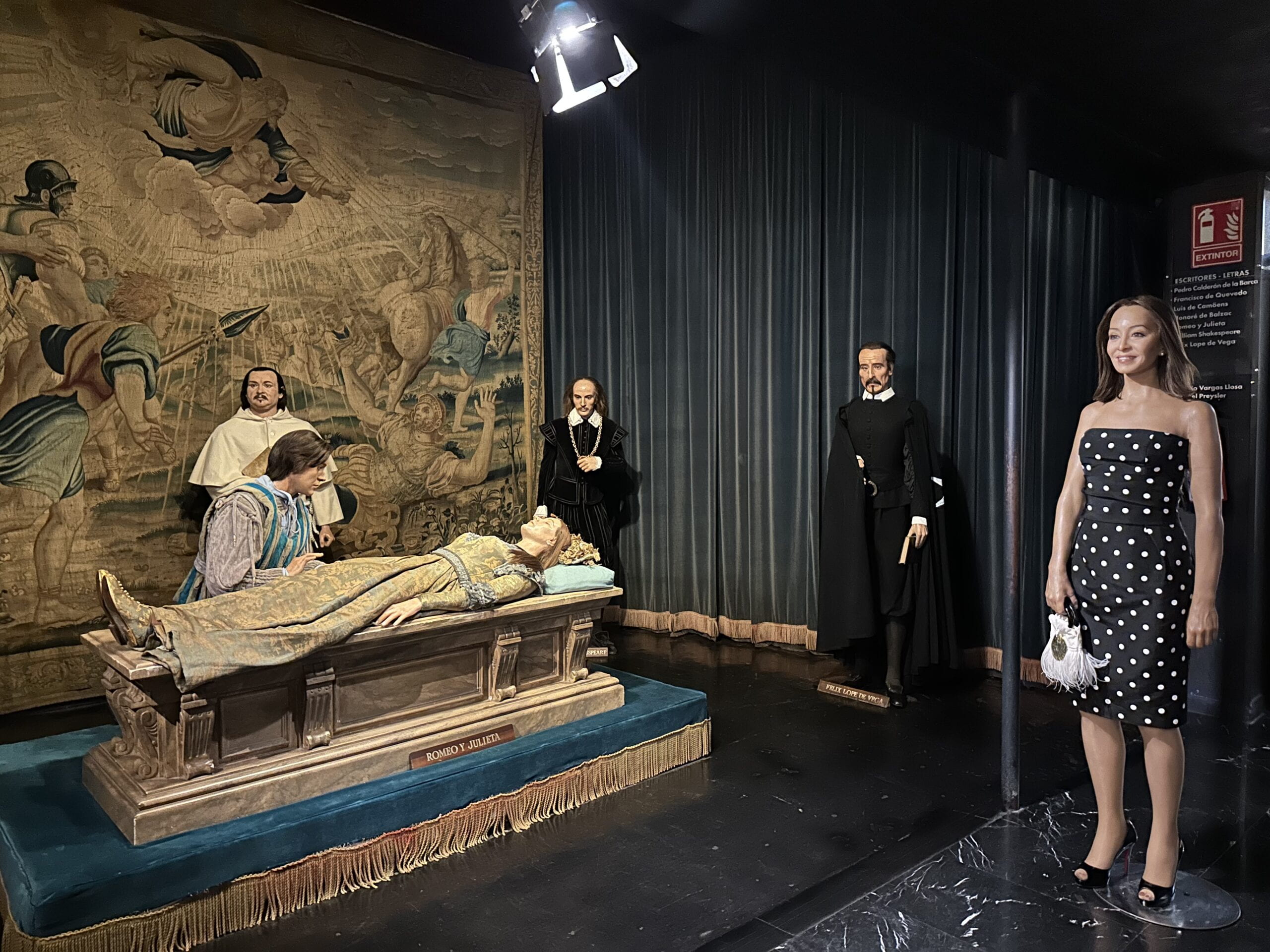
The first display is a life-sized tableau of Goya’s Tres de mayo, which depicts the execution of Spanish soldiers by Napoleon’s forces in center of the city in 1808. It’s still a deeply-felt theme and when I was there, a woman in her twenties was standing in front of it, silently weeping.
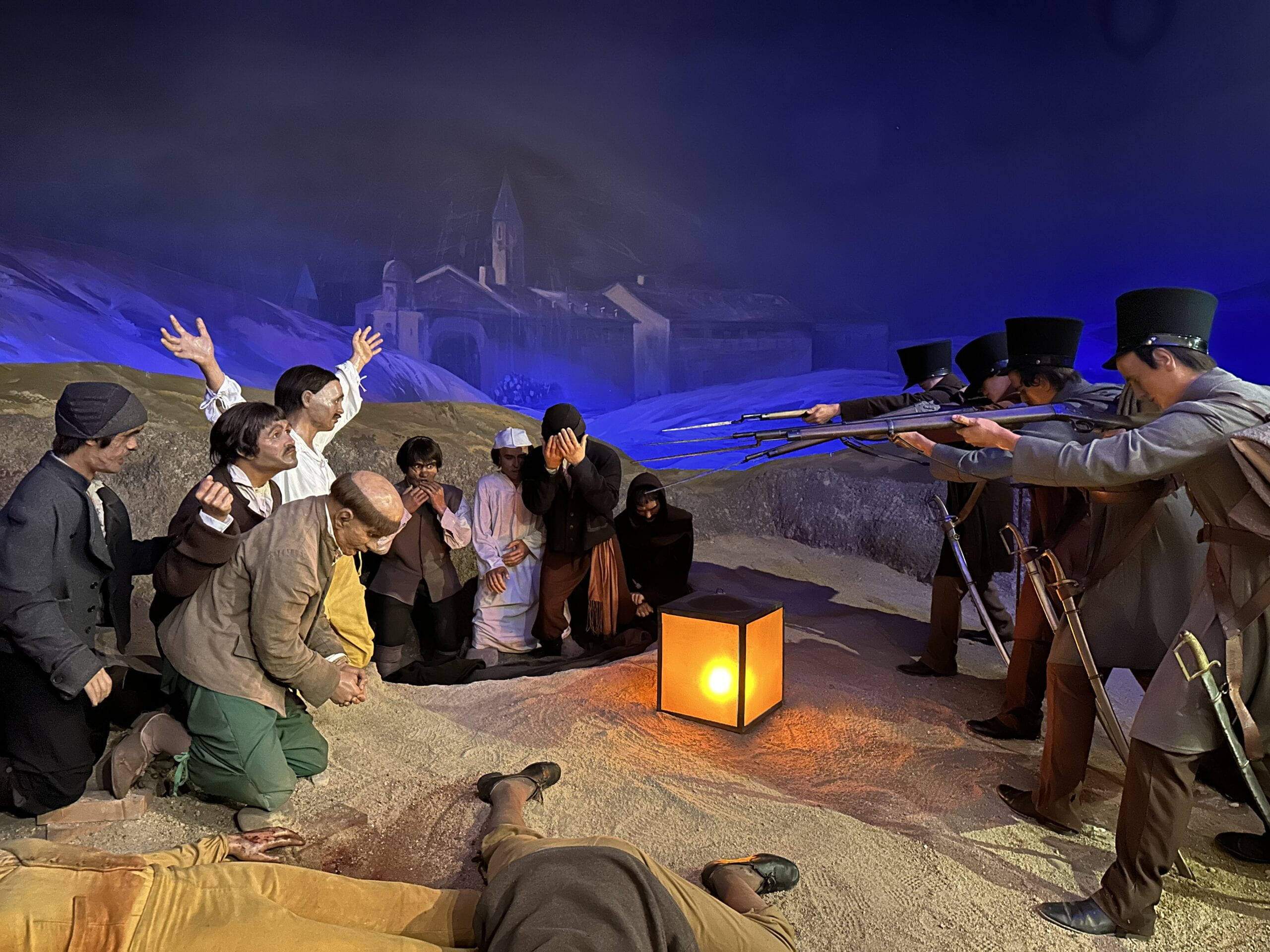
Oh, and Francisco Franco is just… there, labeled like he’s any other guy in the museum, seated next to the emeritus king who is both a hero of democracy and hopelessly intertwined with Franco’s regime. Nationalism in wax at its questionable finest.
